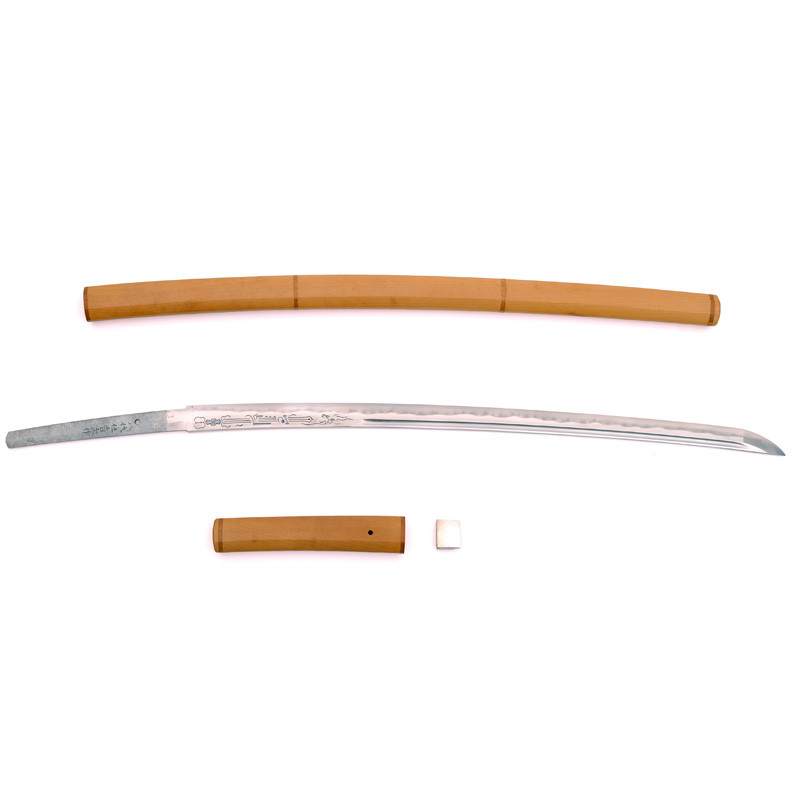















More informations about this product
| Total Weight | 1.378 kg | |
| Weight without Saya | 1.183 kg | |
| Blade Weight | 0.952 kg | |
| Full Blade length (Toshin) | 97.80 cm | |
| Nagasa | 75.10 cm | |
| Nakago Length | 22.30 cm | |
| Sori (curvature) | 1.80 cm | |
| Kissaki Length | 5.45 cm | |
| Moto Haba | 3.41 cm | |
| Saki Haba | 2.75 cm | |
| Moto Kasane | A = 0.71 cm B = 0.75 cm |
|
| Saki Kasane | A = 0.52 cm B = 0.61 cm |
|
| Curvature | Koshi Zori (curvature on the 1stthird) | |
| Type Kissaki | O Kissaki | |
| Blade Structure | Shinogi Zukuri (diamond shaped) | |
| Mune | Iori Mune (triangular) | |
| Hamon | Ō Gunome Choji Midare | |
| Hada | Ko Itame | |
| Boshi | Ō Kissaki. On face Omote and Ura Togari Boshi. | |
| Horimono | Omote 表: Kurikara 倶利伽羅, also known as Ken Maki Ryu 剣巻龍. This is a representation of a dragon revolving around a double-tranched blade with a Vajra Buddhist handle. This symbol represents the incarnation of Acala/ Fudo Myō, an angry deity casting out evil spirits and demons. Ura 裏 : - Tsume 爪, representing dragon claws or the end of a Vajra, Buddhist ritual handle driving away demons and evil spirits. - Gomabashi 護摩箸, pairs of chopsticks used during a Buddhist fire ritual to ask for the blessing of Acala (Fudo Myo). |
|
| Nakago | Ubu, signature Katana Mei Omote side, and date Ura side. Form Futsu Gata, Kiri Yasurime. Nakago Jiri Yamashiro Jiri (rounded). | |
| Saya | In Magnolia with a length of 80.4 cm for a weight 0.199 kg | |
| Tsuka & Tosogu (Tsuba, Menuki, Fuchi Kashira) |
- Tsuka: In Magnolia, with a weight of 84 g for 23.6 cm - Habaki: : 45 g, in silver, with Yujo Neko Gaki. |
|
| Study & Team Review |
Yoshitsugu 吉次 is a blacksmith from Yatsushiro, Kumamoto Prefecture 熊本, on Kyushu. This is the former province of Higo, known for being ruled by the Hosokawa clan, great warriors and swordsmen. This is also where Miyamoto Musashi wrote the treatise on the five wheels (Gorin No Sho). |
|
Share your opinion
error Your review appreciation cannot be sent
feedback Report comment
check_circle Report sent
error Your report cannot be sent